Dreams of Ireland |
||||||||||
 |
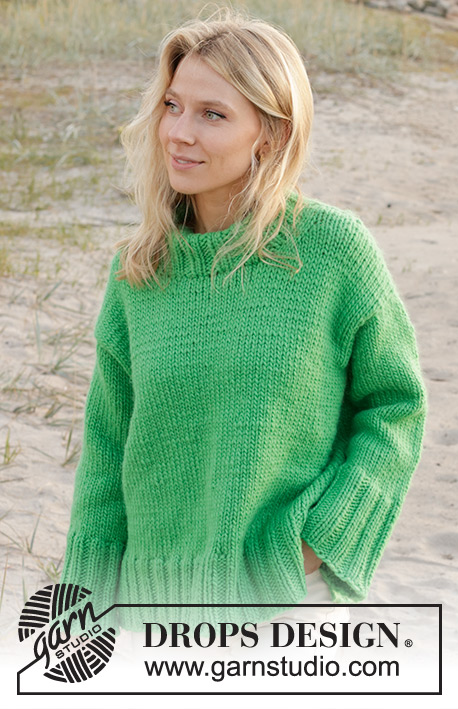 |
|||||||||
Knitted sweater with 1 strand DROPS Snow or 2 strands DROPS Air. The piece is worked top down with European/diagonal shoulders and double neck. Sizes S - XXXL.
DROPS 241-13 |
||||||||||
|
------------------------------------------------------- EXPLANATIONS FOR THE PATTERN: ------------------------------------------------------- RIDGE/GARTER STITCH (worked back and forth): Knit all rows. 1 ridge = knit 2 rows. INCREASE TIP FROM RIGHT SIDE: Increase AFTER MARKER: Use the left needle to pick up the front strand between 2 stitches from the previous round, knit the back loop. Increase BEFORE MARKER: Use the left needle to pick up the back strand between 2 stitches from the previous round, knit the front loop. INCREASE TIP FROM WRONG SIDE: Increase AFTER MARKER: Use the left needle to pick up the back strand between 2 stitches from the previous round, purl the front loop. Increase BEFORE MARKER: Use the left needle to pick up the front strand between 2 stitches from the previous round, purl the back loop. DECREASE TIP (for sleeves): Decrease 1 stitch on either side of the marker-thread as follows: Work until there are 3 stitches left before the marker-thread, knit 2 together, knit 2 (marker-thread sits between these 2 stitches), slip 1 stitch as if to knit, knit 1 and pass the slipped stitch over the knitted stitch. ------------------------------------------------------- START THE PIECE HERE: ------------------------------------------------------- SWEATER – SHORT OVERVIEW OF THE PIECE: The top of the back piece is worked back and forth with circular needle, top down as far as the armholes. Stitches are knitted up along each shoulder, then stitches are cast on for the neck and the front piece is worked back and forth with circular needle, top down as far as the armholes. The front and back pieces are joined and the body worked in the round with circular needle. Stitches are knitted up around the armholes and the sleeves worked first back and forth, then in the round with short circular needle/double pointed needles. The neck is worked to finish. BACK PIECE: Cast on 16-16-18-20-20-20 stitches with circular needle size 9 MM = US 13 and 1 strand DROPS Snow or 2 strands DROPS Air. Purl 1 row from the wrong side. Insert 1 marker inside 3 stitches on each side. Allow them to follow your work onwards, always inside the outermost 3 stitches. Work stockinette stitch back and forth. AT THE SAME TIME increase AFTER the marker at the beginning of the row (seen from the right side) and BEFORE the marker at the end of the row – read INCREASE TIP FROM RIGHT SIDE. On the next row (wrong side) increase in the same way – read INCREASE TIP FROM WRONG SIDE. Increase both from the right and wrong side a total of 16-18-18-20-22-24 times. After the last increase there are 48-52-54-60-64-68 stitches. The piece is now measured from here! REMEMBER THE KNITTING GAUGE! Continue with stockinette stitch until the piece measures 14-15-16-16-17-18 cm = 5½"-6"-6¼"-6¼"-6¾"-7", along the armhole. Cut the strand. Put piece aside and work front piece as explained below. FRONT PIECE: Start on the left shoulder (when the garment is worn). Knit up 16-18-18-20-22-24 stitches inside 1 edge stitch along the left shoulder on the back piece (i.e. knit up 1 stitch in each row on the top edge of the back piece). Work stockinette stitch back and forth for 6 cm = 2⅜". Now increase at the beginning of each row from the right side after the 3 stitches - remember INCREASE TIP FROM RIGHT SIDE. Increase 1 stitch 4 times = 20-22-22-24-26-28 stitches. Work 1 row from the wrong side. Cut the strand, put piece aside and work the right shoulder as follows: Knit up 16-18-18-20-22-24 stitches inside 1 edge stitch along the top of the right shoulder on the back piece. Work stockinette stitch back and forth for 6 cm = 2⅜". Now increase at the end of each row from the right side before the 3 stitches - remember INCREASE TIP FROM RIGHT SIDE. Increase 1 stitch 4 times = 20-22-22-24-26-28 stitches. After the last increase, work the last row from the wrong side. On the next row from the right side work as follows: Stockinette stitch over the 20-22-22-24-26-28 stitches from the right shoulder, cast on 8-8-10-12-12-12 stitches for the neck at the end of the row and work stockinette stitch over the 20-22-22-24-26-28 stitches from the left shoulder = 48-52-54-60-64-68 stitches. Work until the piece measures 24-25-26-28-29-30 cm = 9½"-9¾"-10¼"-11"-11⅜"-11¾" along the armhole. Now join the front and back pieces for the body as follows: BODY: Work the 48-52-54-60-64-68 stitches from the front piece on the needle, cast on 2-2-4-4-6-8 stitches at the end of the row (side), work stockinette stitch over the 48-52-54-60-64-68 stitches from the back piece, cast on 2-2-4-4-6-8 stitches at the end of the row = 100-108-116-128-140-152 stitches. Work stockinette stitch in the round until the piece measures 49-51-53-55-57-59 cm = 19¼"-20"-21"-21⅝"-22½"-23¼" – measured from the top of the shoulder and down the front piece. Now divide for a split in each side: Place the 50-54-58-64-70-76 stitches from the back piece on a thread or extra needle and work the stitches on the front piece. FRONT PIECE: Change to circular needle size 8 MM = US 11. Knit 1 row from the right side and increase 22-22-26-28-30-32 stitches evenly spaced = 72-76-84-92-100-108 stitches. Work as follows from the wrong side: 1 edge stitch in GARTER STITCH – read description above, * purl 2, knit 2 *, work from *-* until there are 3 stitches left, purl 2 and 1 edge stitch in garter stitch. Continue this rib for 10 cm = 4". Bind off. The sweater measures approx. 60-62-64-66-68-70 cm = 23⅝"-24⅜"-25¼"-26"-26¾"-27½" from the top of the shoulder. BACK PIECE: Place the stitches on circular needle size 8 MM = US 11. Work in the same way as the front piece. LEFT SLEEVE: Use circular needle size 9 MM = US 13 and knit up from the right side 24-25-26-28-29-30 stitches from the bottom of the armhole and to the top of the shoulder (along the front piece) and 14-15-16-16-17-18 stitches from the shoulder down to the bottom of the armhole (along the back piece) = 38-40-42-44-46-48 stitches. Insert 1 marker in the middle of the stitches picked up. Work now back and forth in stockinette stitch with short rows for the sleeve cap, to gives a better shape to the sleeve. 1st row (from wrong side): work to 10 stitches after marker, turn. 2nd row (from right side): work to 10 stitches after marker, turn. 3rd row (from wrong side): work to 14 stitches after marker, turn. 4th row (from right side): work to 14 stitches after marker, turn. 5th row (from wrong side): work to the beginning of the row. Work stockinette stitch back and forth for 4-4-5-5-6-7 cm = 1½"-1½"-2"-2"-2⅜"-2¾", measure from where the stitches were picked up (all length are measured mid on top of sleeve). Now join the sleeve using short circular needle/double pointed needles size 9 MM = US 13 and continue in the round. Insert 1 marker-thread at the beginning of the round (mid-under sleeve). Allow the thread to follow your work onwards. Start at the marker thread and work stockinette stitch in the round for until sleeve measures 6-6-7-7-8-9 cm = 2⅜"-2⅜"-2¾"-2¾"-3⅛"-3½". Now decrease 2 stitches under the sleeve – read DECREASE TIP. Decrease like this every 11-11-11-7-6-5 cm = 4⅜"-4⅜"-4⅜"-2¾"-2⅜"-2" a total of 3-3-3-4-4-4 times = 32-34-36-36-38-40 stitches. Continue working until the sleeve measures 33-32-32-30-29-28 cm = 13"-12½"-12½"-11¾"-11⅜"-11". There is 15 cm = 6" left; try the sweater on and work to desired length before the rib. Knit 1 round and increase 12-14-16-16-18-16 stitches evenly spaced = 44-48-52-52-56-56 stitches. Change to double pointed needles size 8 MM = US 11. Work rib (knit 2, purl 2) for 14 cm = 5½". Bind off a little loosely. The sleeve measures approx. 48-47-47-45-44-43 cm = 19"-18½"-18½"-17¾"-17¼"-17". Work the other sleeve in the same way, but first knitting up 14-15-16-16-17-18 stitches from the bottom of the armhole to the shoulder along the back piece, then 24-25-26-28-29-30 stitches from the shoulder and down the front piece. Sew the bottom of the armholes together – see sketch. NECK: Start on one shoulder and knit up from the right side, inside 1 edge stitch, 48 to 64 stitches around the neck, using short circular needle size 8 MM = US 11. Work rib in the round (knit 2, purl 2) for 9 cm = 3½". Bind off loosely. Fold the neck double to the inside and fasten with a stitch in each side. |
||||||||||
Diagram explanations |
||||||||||
|
||||||||||

|
||||||||||
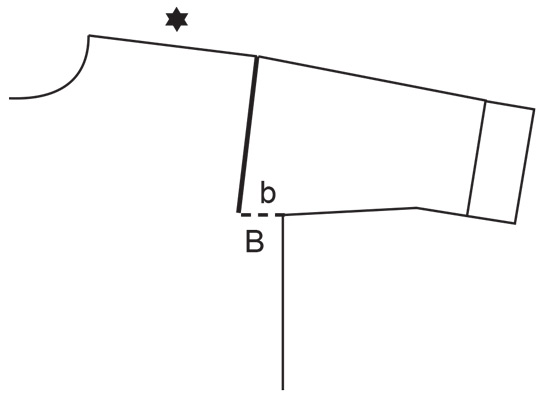
|
||||||||||
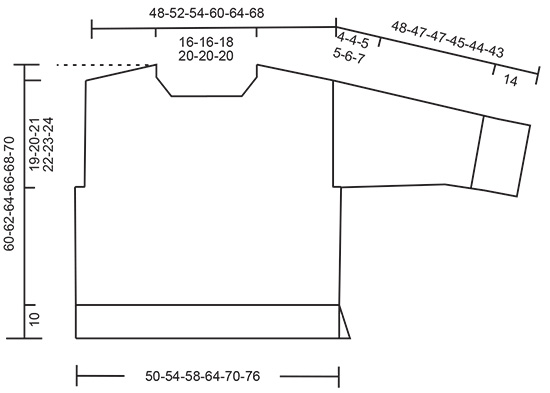
|
||||||||||
|
Have you made this or any other of our designs? Tag your pictures in social media with #dropsdesign so we can see them! Do you need help with this pattern?You'll find tutorial videos, a Comments/Questions area and more by visiting the pattern on garnstudio.com. © 1982-2024 DROPS Design A/S. We reserve all rights. This document, including all its sub-sections, has copyrights. Read more about what you can do with our patterns at the bottom of each pattern on our site. |
||||||||||







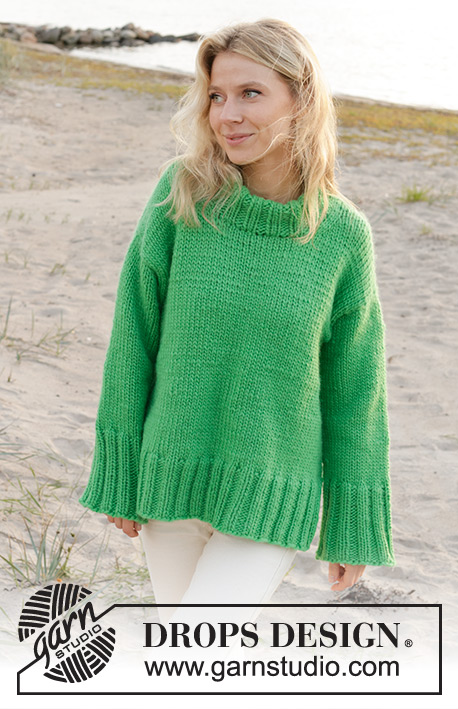
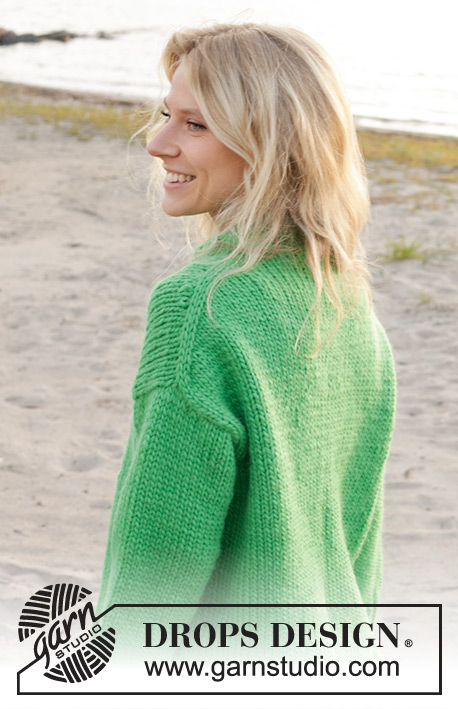


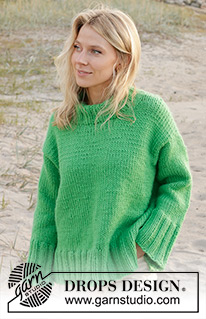
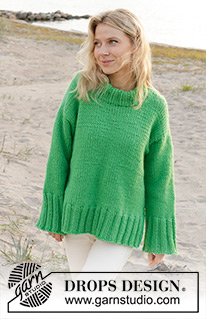
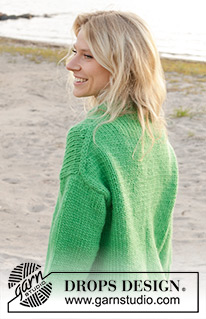









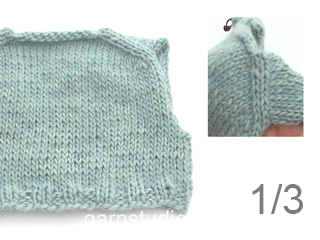
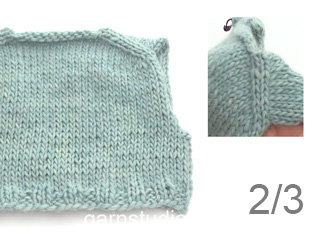
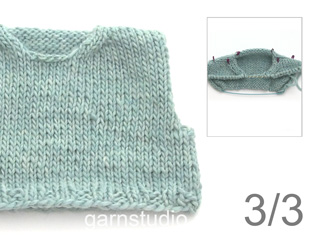


























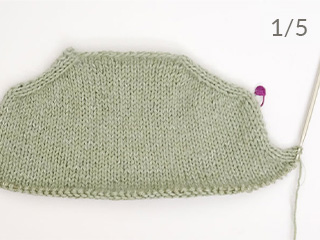
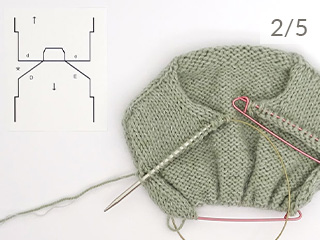
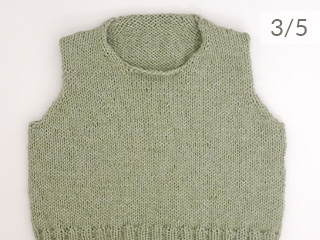

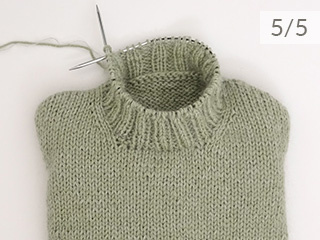























Comments / Questions (12)
Thanks for your reply. I am getting 13 stitches in 10 cm with Drops Wish using 8 mm needles. If I chose a pattern that gives me same tension can I still knit w Drops Wish on 8mm even if the pattern calls for a smaller size 7mm needle and less bulky group C yarn? For example, would pattern 236-35 work w 8mm and Wish as it gives me 13 stitches in 10cm, the same tension called for in 236-35?
20.11.2023 - 17:48DROPS Design answered:
Dear Lynn, to get the correct measurements as in the chart, your tension should match the one stated in the pattern; so most important is always the number of stitches for 10 cm as given in the pattern, not the needle size as we all knit a different way, sometimes looser sometimes tighter, so adjust needle size to get the correct tension, ie in this pattern you need to have 10 sts x 14 rows in stocking stitch with a yarn group E as Wish- if you get 13 sts you should try again with larger needles until you get the correct tension. 236-35 is worked with 1 yarn group C + 1 yarn group A = 1 yarn group D as this one is 1 yarn group E. Happy knitting!
21.11.2023 - 08:51Thank you for allowing me to break up my long question into 4 separate comment boxes.
18.11.2023 - 19:19Terminology- are the FRONT PIECE and BACK PIECE Mill (8 mm) the ribbing and not the body? Is all the ribbing for front, back sleeves and neck all knit with 8mm needles? If I size down my needles from 9 mm to 8 mm as described above, then I would use 7 mm for all the ribbing?
18.11.2023 - 19:16DROPS Design answered:
Dear Lynn, this jumper is worked top down, you first start with back piece, then work front piece - to have a better overview on how this will be worked, see the first 3 videos at the very bottom of the pattern where we show how to work an European Shoulder: back piece, front piece and front pieces together with back piece. Happy knitting!
20.11.2023 - 10:18Are my calculations correct? Would I use the same formula to calculate for other sizes eg. S and M? Is it simply a matter of choosing a larger size sweater to make up for the losses in knitting with an 8 mm? As for height, I presume the adjustments will be easier because it means knitting more or less rounds and I can determine that as I go?
18.11.2023 - 19:15For example, for size XS (body width 50 cm flat) using 8mm needles, I calculate the body will be 11.5 cm narrower (flat, one side OR 23 cm narrow circumference). 10 cm = 13 stitches 1 cm = 1.3 stitches Size XS body is 50 cm (flat) 50 cm x 1.3 stitches = 65 stitches (an extra 15 stitches) 15 stitches / 1.3 stitches = 11.5 cm Sweater body will be 11.5 cm narrower (i.e 50 cm - 11.5 cm = 38.5 cm). Are my calculations correct?
18.11.2023 - 19:13DROPS 241-13 - Drops Wish yarn (equivalent to Snow) 1. Using smaller needles - Using circular needles size 8mm (body) and 7mm (rib) instead of 9mm and 8mm (prefer the tension of 8mm, 9 mm too loose) - Magic loop technique My gauge swatch (in the round) on 8 mm needles is 13 stitches wide and 18 rows height = 10x10 cm Is it okay to simply choose a larger size to make up for the difference in gauge?
18.11.2023 - 19:11DROPS Design answered:
Dear Lynn, you will find all our patterns for jumpers with tension 15 to 12 stitches for 10 cm here - it might help you finding the most accurate pattern to follow. Happy knitting!
20.11.2023 - 10:16Are my calculations correct? Would I use the same formula to calculate for other sizes eg. S and M? Is it simply a matter of choosing a larger size sweater to make up for the losses in knitting with an 8 mm? As for height, I presume the adjustments will be easier because it means knitting more or less rounds and I can determine that as I go?
18.11.2023 - 19:09DROPS Design answered:
Dear Lynn, sorry we are not able to adjust every pattern to every single request, it might be wise to use as basis a pattern with the correct tension and the required measurements, your yarn store can be also able to help you further. Or ask other knitters for their help in our DROPS Workshop; thanks for your comprehension. Happy knitting!
20.11.2023 - 10:14Waarom beginnen bijna al de patronen vanaf boven en dan ook nog op een rondbreinaald.. Niet leuk liever gewoon normaal
21.02.2023 - 19:45The Classic Fit Jumper
20.01.2023 - 22:07Green luck
18.01.2023 - 17:25